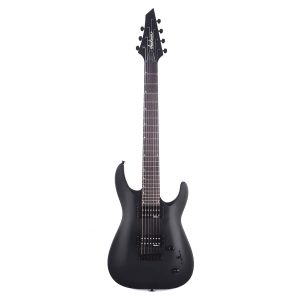
- Body Material – Poplar
- Pickup Configuration – Humbucker
- Bridge System – Hardtail
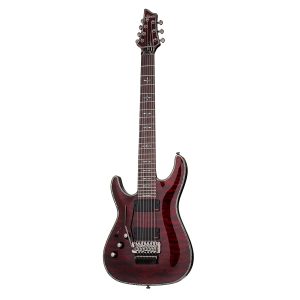
- Body Material – Wood
- Pickup Configuration – Vol (Tap)/Tone/3-Way Switch
- Bridge System – Tremolo
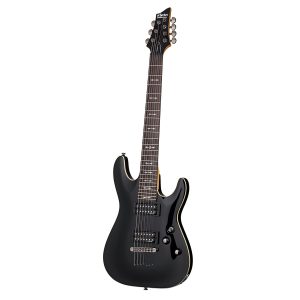
- Body Material – Basswood
- Pickup Configuration – Humbucker
- Bridge System – Tune-O-Matic
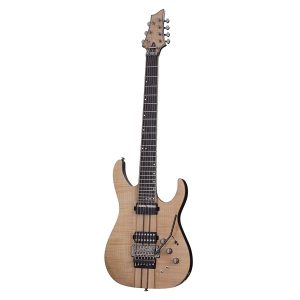
- Body Material – Swamp Ash
- Pickup Configuration – Combination
- Bridge System – Tremolo
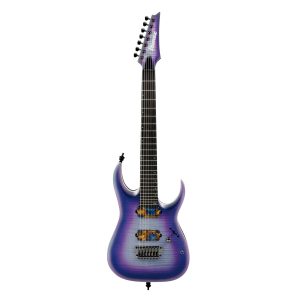
- Body Material – Maple
- Pickup Configuration – IBRGA71ALIAF
- Bridge System – Hardtail
Choose the Best 7-String Guitar for Metal
Customer’s Choice: the Best Rated 7-String Guitars for Metal
19 users answered this survey. Please help us improve this review!
What’s the best 7-string guitar for metal? It depends on your budget, playing style, and preferences. In this guide, metal music experts will give you a brief overview of what to look out for in a 7-string guitar for metal before going into detail about some of the top models in different price ranges. They have also included a buyer’s guide with helpful tips that should help you make an informed decision about which one is right for you!
Table of Contents
JS Series Dinky Arch Top JS22-7 HT AH Satin Black – the Editor’s choice!
 When it comes to the quality-to-price ratio, this model can’t be beaten. The JS22-7 is a slim guitar with the perfect neck shape for easy playing. It features an extra string at the bridge to give you more variety of sound and chords, so you’ll never come up short again.
When it comes to the quality-to-price ratio, this model can’t be beaten. The JS22-7 is a slim guitar with the perfect neck shape for easy playing. It features an extra string at the bridge to give you more variety of sound and chords, so you’ll never come up short again.
The neck has a nice slim “D” shape, with a relatively flat 16-inch fretboard radius. The frets feature nice moderately low action you can feel good about banging around on when writing new songs or playing little improvisations in between gigging to stay in practice (plus, it keeps your strings less worn).
The JS22-7 can become the best bet for being subtle, but still turning heads. Sounding better than you’d expect from a budget guitar and priced right smack in the sweet spot of affordability; this guitar will steal hearts with its quality and low price point.
Schecter Hellraiser C-7 FR 7-String Electric Guitar – the best for the finish!
 Schecter Hellraiser C-7 FR 7-String Electric Guitar is for those who love the tone, feel, and quality of their acoustic guitar but want to unleash it on stage. The Schecter Hellraiser’s body is made entirely of mahogany, so you’ll get the resonance and mellower tones with a lower attack than most electric guitars.
Schecter Hellraiser C-7 FR 7-String Electric Guitar is for those who love the tone, feel, and quality of their acoustic guitar but want to unleash it on stage. The Schecter Hellraiser’s body is made entirely of mahogany, so you’ll get the resonance and mellower tones with a lower attack than most electric guitars.
The Schecter Hellraiser C-7 FR 7-String Electric Guitar is a high-quality instrument that combines amazing tone with versatility – which is everything you could ask for from an axe.
Schecter Hellraiser guitars are made for extreme metal and the players that demand the best. The Schecter Sound Bridge gives you great feedback while maintaining perfect balance, making it feel almost like an acoustic guitar.
Schecter OMEN-7 7-String Electric Guitar – the best for non-metal players too!
 Get the Schecter OMEN-7 7-String Electric Guitar. Whether you’re a beginner or a more experienced musician, this guitar is right for you! Because of its construction, ridiculously high-quality materials, and stellar variety of tones and abilities, this guitar is perfect for whoever wants to push tonal boundaries and get the best performance out of their adventures.
Get the Schecter OMEN-7 7-String Electric Guitar. Whether you’re a beginner or a more experienced musician, this guitar is right for you! Because of its construction, ridiculously high-quality materials, and stellar variety of tones and abilities, this guitar is perfect for whoever wants to push tonal boundaries and get the best performance out of their adventures.
For non-metal players looking to go hardcore on their musical journey with killer opportunities to explore new sounds in almost any genre imaginable, there’s no better way than to hop right into an OMEN by Schecter like this one.
The Schecter OMEN-7 7-String Electric Guitar has a wide range of versatility and tones, so you can play styles from classical to jazz to rock. Super lightweight with a solid construction, this guitar is perfect for any player in search of high quality and playable tone in a budget range.
Schecter Banshee Elite-7 FR-S 7-String Solid-Body Electric Guitar – the best for the pickups!
 With 7 steel strings, Schecter’s Banshee Elite-7 FR-S faithfully delivers blistering metal tones with precision accuracy. The guitar comes equipped with a Floyd Rose locking nut for sustain that won’t go away, allowing you to use all of the strings like true masters on stage or in the studio.
With 7 steel strings, Schecter’s Banshee Elite-7 FR-S faithfully delivers blistering metal tones with precision accuracy. The guitar comes equipped with a Floyd Rose locking nut for sustain that won’t go away, allowing you to use all of the strings like true masters on stage or in the studio.
It also features great pickups so you can shred without any problems through any song.
The neck is maple and walnut for strength but with a beautiful flame maple top to give your fingers just what they need.
The Schecter Banshee Elite-7 FR-S 7-String Solid-body Guitar is perfect for any rock or metal enthusiast. This guitar will provide you with a powerful, crisp clean sound while maintaining depth when playing at high volumes without excessive cuts to their mids, highs, or lows.
Ibanez RGA71ALIAF RGA Axion Label Indigo Aurora Burst Flat – the best for design!
 Ibanez guitars have been the bestselling guitar company for years. They’re sleek, versatile, and ergonomically designed with a neck shape that’s optimized for speed of play.
Ibanez guitars have been the bestselling guitar company for years. They’re sleek, versatile, and ergonomically designed with a neck shape that’s optimized for speed of play.
The RGA71ALIAF stands for an ideal tournament-ready instrument – its performance amplified by a set of 7 Bare Knuckle Aftermath pickups giving an aggressive tone to match your relentless style of shredding or more nuanced tonality for lead work.
This guitar can be perfect for anyone looking to have that unique instrument that will stay with him or her forever. The indigo aurora burst finish is extremely eye-catching and its design might be the best feature of all – in fact, many people approach this guitar with actual disbelief. Sounds are clear across both pickups, making it perfect for any style player.
The Ibanez RGA71ALIAF has a beautifully crafted body and the perfect setup for an incredible experience. The tone is rich and warm with crisp highs that you’ll surely love, especially when played through those 7-string Bare Knuckle Aftermath Humbuckers.
The Buyer’s Guide
Major features of 7-string guitars for metal:
Fretboard. Most of the best guitars for the metal have a rosewood fretboard. However, some manufacturers use maple or ebony as well. These materials are preferred by many guitarists because they provide faster action and allow you to play more comfortably. On the other hand, there’s nothing wrong with using a standard rosewood board if it is made from quality woods.
String action. The string height on most seven strings used in metal music is about half an inch above the 24th fret (where your index finger rests). If this isn’t comfortable enough for your hands then lower the nut slots so that you can set up less tension between them.
Neck radius. For the most part, seven-string guitars for the metal have a pretty flat neck radius. Some that feature compound radius necks as well provide you with the best of both worlds (flat and curved).
Weight. Most basswood bodies weigh about eight pounds or less while mahogany is heavier because it has denser wood fibers. The weight can depend on other factors like hardware too but there isn’t much difference between them when compared to standard 6 strings.
Materials:
1) Materials of body
There are several materials used to make the body of these guitars. The most common ones include:
- Mahogany – this wood is relatively heavy, which adds great sustain, and tone to your guitar’s sound. It also offers decent warmth for all musical genres including metal. However, it may be too dark for some people’s taste;
- Alder – for those who don’t like mahogany or looking for something more versatile, this material can offer comparable benefits but with a better balance between lows and highs as well as less weight than the former option above. But you will need to spend more money on it since it costs much higher than other options such as basswood below;
- Basswood – if the two choices above are not for you, basswood is the most common material as it offers a more balanced tone with brighter sound and lighter weight. It can be considered as an entry-level option if you don’t want to spend much on your first seven-string guitar. However, its tonal properties may vary depending on where the wood was sourced from;
2) Materials for neck
The neck’s materials will also determine how easy or difficult it would be to play these guitars:
- Maple – as one of the hardest woods used in building necks, maple provides great stability that allows for less fatigue when playing metal songs. On this note, maple necks that provide a fast key response and low come highly recommended for those who are looking for a guitar with great playability;
- Rosewood – this wood has been known to give guitars an overall warm tone that is perfect if you are into metal genres such as death metal or doom. However, this type of neck may have issues when it comes to stability that can cause problems in holding barre chords during live performances;
- Maple/ebony – a good choice for those who want the best balance between stability and sound quality. It provides slightly better sustain compared to rosewood necks while offering greater resistance against humidity changes allowing your instrument well suited in all environments whether you’re playing at home or outdoors;
The choice of the neck’s material has a great impact on the sound, so you should consider this aspect carefully. If your guitar has a mahogany neck, it will produce rich tones with strong bass. Rosewood is another wood type that can create warm sounds. If you want to get a bright and clear sound, maple necks are a great choice for metal music.
3) Materials of frets
You should also pay attention to the material of frets: stainless steel or nickel-plated alloy would be better than plain steel because they last longer. Finally, seven-string guitars feature either bolt-on or set necks; both options have advantages and disadvantages so choose what fits you best!
Features of the neck
The first thing that you have to consider in choosing a seven-string guitar is the neck. Metal music requires fast playing and frequent bending, so for this purpose, it’s better to choose thick necks with a comfortable radius. A good option would be a neck with a radius of at least 16 inches.
The standard thickness for most necks is 22 frets, but there are some seven-string guitars with 24-fret necks too.
The majority of guitars come with a 25.25-inch scale length, but there are several models that go up to 27 inches and beyond. This extra range can be useful for lower tunings like drop C or D standard tuning (you would use this on the song Ringworm by Chimaira). These longer scales allow you to still keep an even string tension across all strings when playing in these low tunings because they stretch less than shorter scale lengths do at those pitches.
Having a guitar with a long scale also allows you to have increased note clarity in your sound due to having more string mass per inch of string which helps them ring out clearly especially if you are playing with a lot of distortion.
Longer scale necks, however, do have some drawbacks that may not affect everyone but it is still worth mentioning them. One problem is that your string tension will be higher than on shorter-scale guitars.
So, this can really wreak havoc on the neck itself and cause unwanted warping over time if you play often enough in lower tunings to require 27+ inch scales (this happens more often when using heavier gauged strings which usually come standard for players who use 7 strings).
Additionally, these longer-scaled instruments typically weigh more as well due to having a larger portion of their overall weight being fretboard mass so extended range guitars can feel front heavy despite where they sit on your strap or stand.
1) Neck construction
Another feature of seven-string guitars is the construction. As it has been mentioned before, metal music requires fast playing and frequent bending.
Therefore, it’s better to choose a guitar with neck-through or set-in necks. These will allow you to play faster and bend strings more often without any problems.
Neck-through guitars are more expensive than set necks. This is due to the construction process of neck-through guitar that requires both an experienced luthier and additional time spent on this type of model.
On the other hand, if you own a guitar with non-solid headstock (i.e., it does not have any wood supporting its shape), seven-string models can be your best option as they will help decrease tension exerted onto the screws holding together fragile materials like plywood or laminate used for making solid-body electric guitars.
Seven-string models can be your best option as they will help decrease tension exerted onto the screws holding together fragile materials like plywood or laminate used for making solid-body electric guitars.
Other options include bolt-on necks, which require special care during repairs and installation of pickups due to their construction type that usually involves screwing them into pre-drilled holes in the wooden body of an instrument. However, this does not mean you cannot find good seven-string models built using this technique – it’s just harder.
A bolt-on neck is another option for seven-string guitars, requiring special care during repairs and installation of pickups due to their construction type. However, this does not mean it’s impossible to find good models built using this technique – it just requires more effort in some cases.
2) Neck profile
The neck profile is the shape of the steel pole between your headstock and where you stand. If it’s too thin, this reduces sustain, increases string buzzes, and creates a weak tone. A poor bass response or muddy sound can result if it is too wide or thick causing notes to have less clarity when plucked at different positions along the fretboard radius (the curve of each individual note).
The most common profiles are:
- C-shape that has no taper;
- D-Shape for fast playability;
- U-shape with more room in upper frets for shredding solos;
- Radical V-profile that puts extra pressure on lower strings to create tighter bends among many others;
3) Neck radius
The radius of the neck is another factor to consider, especially if you’re planning on playing fast. If your fretboard has a smaller radius it will be harder for you to play cleanly and consistently at high speeds since more effort will have to be put in when bending strings. A larger radius will make it easier but how large should this radius really be?
Most manufacturers these days are offering between 12-16 inches which work fine for most players although some may want something different depending upon their individual needs. In general, experts recommend going with a 14-inch or 15-inch option, as they tend to work great for metal guitarists who might need that extra bit of clearance from string slurring when shredding away.
4) Fret size and spacing
The fret size and the spacing between individual frets are important factors for a guitar to be used in metal music. In the last two decades, guitars with wider fingerboards and bigger frets dominate the market because they suit well for metal players.
However, people who would like to buy an electric guitar usually want something smaller than what is commonly found in mass-produced models. Wider necks may even cause some discomfort when playing chords or simple riffs unless you have big hands or long fingers (note that not all guitars can accommodate such dimensions).
For this reason, many manufacturers produce various widths of neck profiles – mainly thin and medium ones. However, if you look around enough you will find deep C bodies as well. Generally speaking, if you are a beginner looking for the best guitar to play metal on experts would suggest starting with something in between.
Scale Length
One of the most important things to consider when buying a seven-string guitar is the scale length. As you are aware, there are two types of scales – long and short. Longer scales have more tension that allows for lower notes while shorter scales allow for higher notes due to less tension. This means that if you want lower strings on your instrument then it should be made with longer scale lengths to accommodate them properly.
However, it should be noted that longer scale lengths can cause tuning problems. This is why if you are looking for a seven-string guitar with lower strings then the best option would be to buy one made of lightweight tonewoods or basswood as they tend to have better resonance and sustain compared to other types of wood.
If your metal band uses standard tuning then there won’t really be any requirement for extremely high tension on your six-string guitar. Besides, it will be easier to play the guitar with short scales to considering you’ll have six strings instead of seven.
Another thing that needs to be kept in mind is the string gauge – heavier gauges are for lower tunings and lighter ones work well with higher tunings. Also, note that thicker gauge strings can cause neck problems even on standard tuning guitars if they aren’t made from quality tonewoods or basswood but this isn’t an issue if your band uses drop tunings as heavier gauged strings won’t affect the tension much at all while being tuned down so low.
Body Wood
The body wood is also a critical factor to consider when buying the best guitars for metal. The basswood and mahogany are popular choices with many musicians because of their sound quality, but you might want to try something different like poplar or maple if you’re looking for an edgier tone.
Fanned Frets
The fanned frets are the most important distinction between the seven-string guitar and an eight-string guitar. The scale length of a traditional instrument is usually 25 inches or less, but with the addition of one more string, it becomes necessary to adjust this length so that all six strings match up perfectly in tone on each fret. This can be achieved by using two different scales for the neck – longer at top E, shorter below that point – or by adding spacers behind some of the existing strings.
The main difference between a fanned fret and an inline setup is that the former has near-equal spacing for all six strings, while the latter will have more space on one side than another will. This can create problems with intonation if it’s done poorly – most manufacturers of seven-string guitars address this problem by reversing the nut in relation to its location when compared to an eight-string instrument.
An important thing to remember about fanning your frets is that you’ll need a neck with either 24 or 25 extra jumbo-sized frets (or larger ones) in order to take advantage of them properly. Inline configuration bridges usually feature compensated saddles which make up for any off-notes created by these additional frets, but a fanned fret instrument will require a little more tinkering.
The main purpose of the fan-fret design is to make each string sound identical from note to note, and it does this by spreading out all six strings evenly across the neck in order to avoid any dead spots or gaps between them. The spacing on these instruments usually starts with around three millimeters at top E and gradually decreases as you move down towards low B. Some seven-string guitars have fixed bridges which means that they won’t let you adjust intonation without significant modifications.
On some occasions, manufacturers may offer both fanned and inline set-ups on the same model, but this is largely reserved for custom instruments – it’s not common to see a production seven-string guitar with anything other than one or the other.
Pickups
There are two types of bridge pickups:
- active humbuckers (which give hard sounds);
- passive single-coil pickups that produce softer tones but still have good dynamics in solos because of their bright sound character;
You can also use an overdrive pedal if your amplifier doesn’t provide enough gain for soloing on high notes, which will make your instrument sound more like a lead guitar.
Playability
The most important factor to consider when choosing a metal guitar is how it plays. Always check the action, neck curvature, and string height of any potential purchases before buying them. Make sure you can play comfortably with your new instrument without struggling or straining yourself too much. If possible, try playing different guitars that interest you in stores to get an idea that suits you best. It’s better to choose something comfortable rather than opting for high-end models that require effort on your part just because they look good!
When choosing the best model remember:
- quality materials with proper finish (usual gloss);
- comfortable access to higher frets (some manufacturers offer double-action truss rods allowing an individual adjustment of each fret according to its height);
- headstock shape supported by reinforcement plate at the back;
- solid body material with correct thickness depending on the weight distribution needs
These are all elements that will help you choose the best seven-string guitar for metal.
7-String Guitar Care and Maintenance
When you get your new guitar, it’s a good idea to take care of it:
- Wash your hands before touching the strings and body. It is common for guitars to come with some protective wax on them (and in their cases) that should be removed by using a cloth dampened in warm water or guitar polish cleaner;
- If there are sticky substances on your guitar put paper towels under each string then wipe down the entire instrument making sure not to miss any areas like behind the pickups or around the input jack which can quickly accumulate grime when plugged into an amp. Use caution when wiping metal parts as they might scratch easily;
- As much as possible keep leave your expensive instruments out of high heat conditions such as direct sunlight exposure or in a hot car;
- You don’t have to do it regularly but every once in a while check the neck of your guitar for any signs of bowing or warping that can cause intonation issues on some frets if not addressed immediately by having the truss rod adjusted at an instrument repair shop;
- Be sure to tune-up before you start playing, then watch closely over time as things might change with humidity levels, so be prepared to retune occasionally during practice sessions and gigs. If you are more concerned about keeping the original tuning intact more than sounding good though, consider investing in locking tuners that hold their pitch even through extreme changes better than standard ones often found on beginner guitars typically $400 new nowadays;
- It’s also a good practice to wipe down your strings after every couple of hours of playing time with any cloth that won’t scratch the metal. Be sure not to let too much polish get on surrounding plastic parts as it can be hard to remove and might leave marks if you’re not careful;
- You don’t have to do this but sometimes putting graphite or extra light oil on the nut helps keep it sliding smoothly which is always nice for quick string changes at gigs, especially when using multiple tunings over time;
FAQ
Are 7-string guitars better for metal?
Although you can play metal on many different types of guitars, the seven-string guitar is best for this style. With more low frequencies than six or eight strings, these instruments sound incredible when playing heavy music. Perhaps most importantly, this is the standard guitar for modern metal.
What metal bands use 7-string guitars?
Metallica, Meshuggah, and Dream Theater are the most notable bands that use 7-string guitars. All three of these groups have also influenced a lot of modern metal musicians today to take up this instrument. Nu-metal bands like Korn put the 7-string guitar in the limelight as well in the 2000s.
Are 7-string guitars worth it?
Numerous guitarists have been using seven-string guitars for metal since the 1980s, with great success. Although there are some benefits to having a six or eight-string electric guitar (or any number of strings), most people prefer the sound and feel that comes from playing on a seven-string guitar because it gives them extra low notes which can be used for heavy chords, riffs, and solos.
It also allows you to experiment more with your music by providing new chord shapes as well as allowing yourself greater expression when soloing. The seventh string is usually tuned one octave below the lowest note on your regular six-stringed instrument, but this may vary depending on what works best for you in terms of tone and playability.
A seven-string guitar is different from a regular six-string in that it has an extra bass string that is usually tuned to the “B” note. This allows you access to lower pitches and more room for creative experimentation with your sound by giving you even greater tonal possibilities when playing scales or chords. The seventh string can also be extremely useful when creating riffs, solos and harmonies because of how low some of the notes are – they add depth and weight to any piece of music being played on them!
In addition, there have been many cases where having a seven-string guitar makes composing easier as well because songs can often benefit from extended range guitars when writing heavy metal tracks (the main reason why this instrument type is very popular for this genre of music). The added low-end frequencies can really help you to stand out from other musicians who are playing the same type of sound.
Getting a 7-string guitar also allows you to have more room to experiment with your composition by giving yourself access to lower notes that do not exist on regular six-stringed instruments, but again this may vary depending on what works best for your style and preference as well as how much money you want to spend. If possible it’s always a good idea to try before buying if at all possible (or at least get some expert advice) because these types of guitars often require different styles and techniques when compared with their traditional counterparts.
A final benefit that experts will mention here is one that is very important for metal guitarists especially: the lower string count allows you to tune your instrument down a whole step (lowering it by one tone) and still be able to play notes that are completely in key with each other. This is extremely useful when doing drop-tuned riffs or soloing because you don’t have any unnecessary tensions which could affect your sound and possibly even break strings!
There are many benefits associated with using seven-string guitars for both compositional purposes as well as live performances so if you haven’t tried this type of electric guitar before then now may be the time to give them a shot – they will definitely help improve your music-making experience!
What is the tuning of a 7-string guitar?
The tuning of a seven-string guitar is the same as that of an ordinary six-string acoustic or electric guitar, with each string tuned to the interval one note higher than the corresponding string on a standard six-string. It’s also known as “Drop A” tuning and is most commonly used by bands such as Trivium, Veil Of Maya, and Periphery.
Does Breaking Benjamin use 7-string guitars?
No, Breaking Benjamin mostly uses six-string guitars. The band members have stated that they are more comfortable on the shorter strings and prefer to play on instruments with only six strings. Ben Burnley favors Ibanez RG series models for live performances while Jeff Worley plays Jackson Guitars during recording sessions.
Who played the first 7-string guitar?
A luthier named Kirk Sand in 1983 created the first seven-string guitar, and it was designed by Lenny Breau. The seventh string, however, was not a lower one but rather an additional high E string above the high E. This string was tuned to A. There were several issues with this notion, particularly regarding scale length. At a normal scale length of 25.5 inches, the high A string had too much tension and broke frequently. The concept was abandoned after numerous failures.
In the mid-eighties, Steve Vai pondered the idea. However, after many prototypes with Ibanez Guitars, he eventually based his design on a Jazz 7 string. He suggested adding a 7th string and lowering it. Rather than having a 7th string that was high like in the original plan. This still provided you more playing area. In 1990, Ibanez began producing the guitar.
Can you tune a 7-string to drop B?
Yes, you can tune a guitar to drop B. However, if the strings are too thin for this tuning it might not hold so well. If they don’t have enough tension it will be difficult to play and can break easily.
Did Robert Johnson use 7 strings?
In the early 20th century, Robert Johnson is believed to have been one of the first players of a seven-string guitar. While it’s not clear whether or not he actually did use a seven-string instrument during his career, some believe that two of his famous recordings – “Malted Milk” and “Little Queen Of Spades” – were recorded using such an instrument.
Useful Video:The Best 7 & 8 String Guitars for Metal
Final thoughts
A 7-string guitar will sound different than a 6-string. You can’t expect to get the same tone or pitch range out of it, but that’s okay! Many people who play metal music love the unique qualities and nuances in their sound. Some find they’re able to achieve more tonal variety with this type of instrument, which is perfect for when you want to experiment outside your usual style. The experts have compiled a buyer’s guide and a short overview of what to look for in a quality instrument, including tips on price ranges and playing styles.


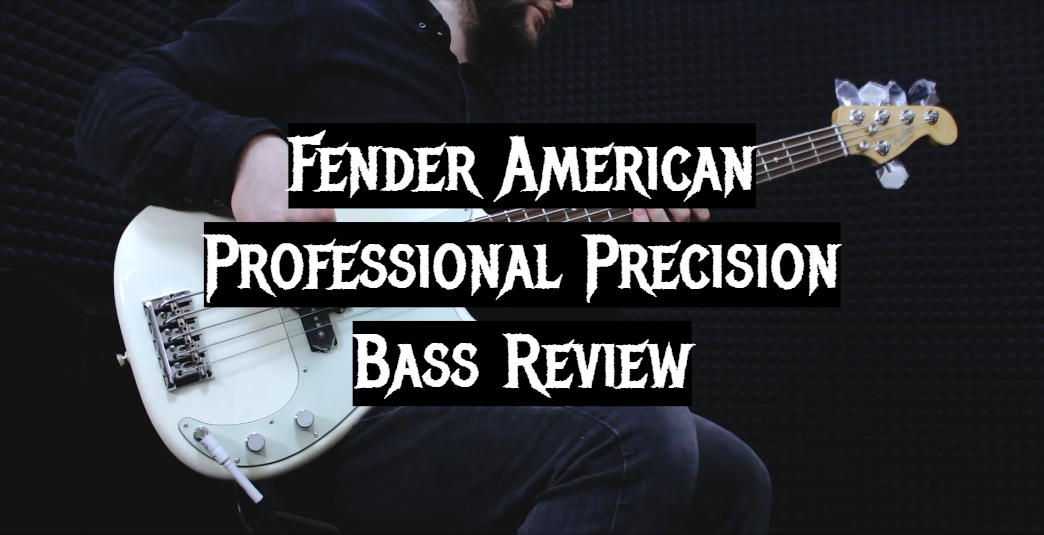
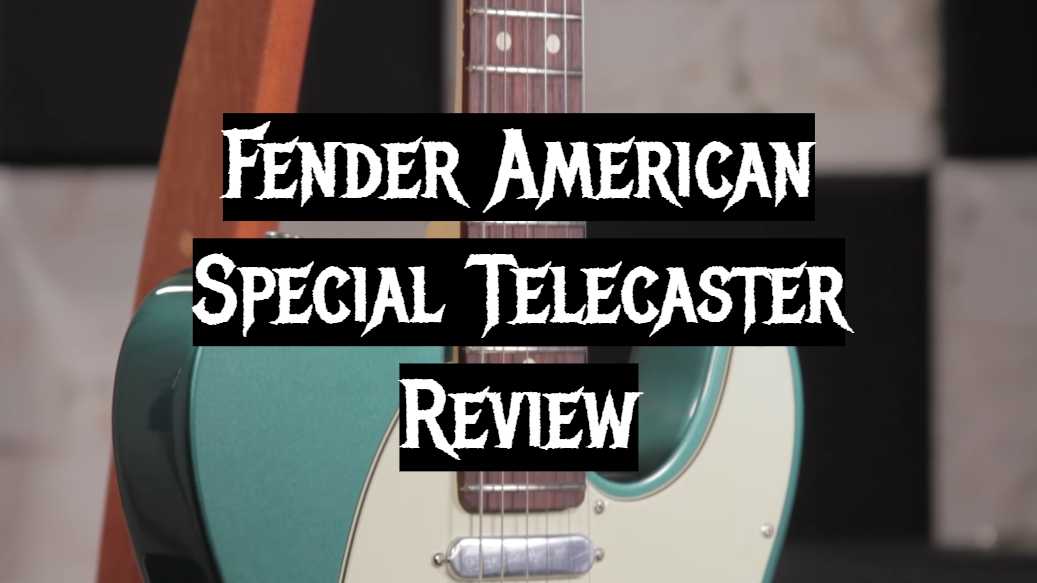
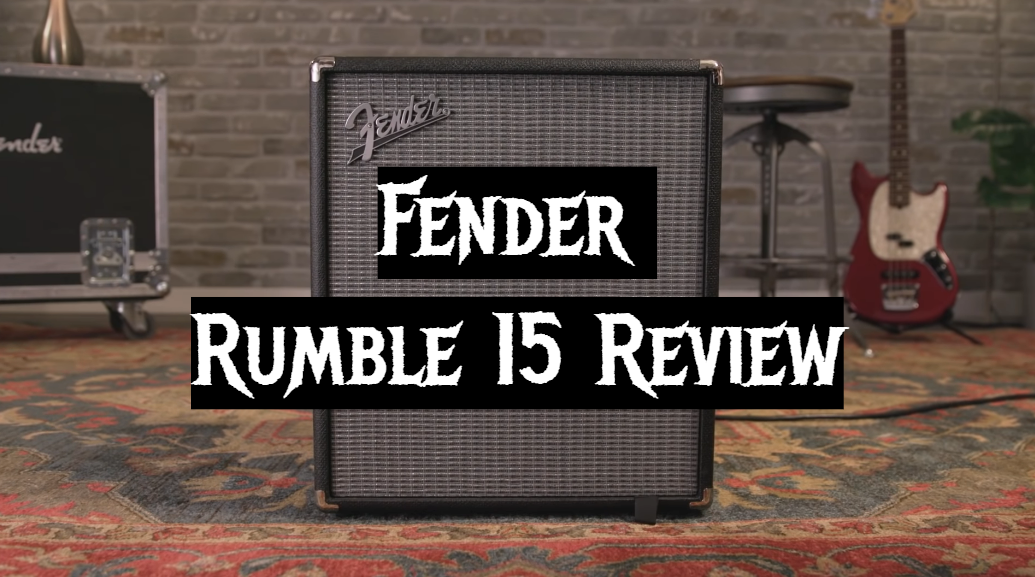
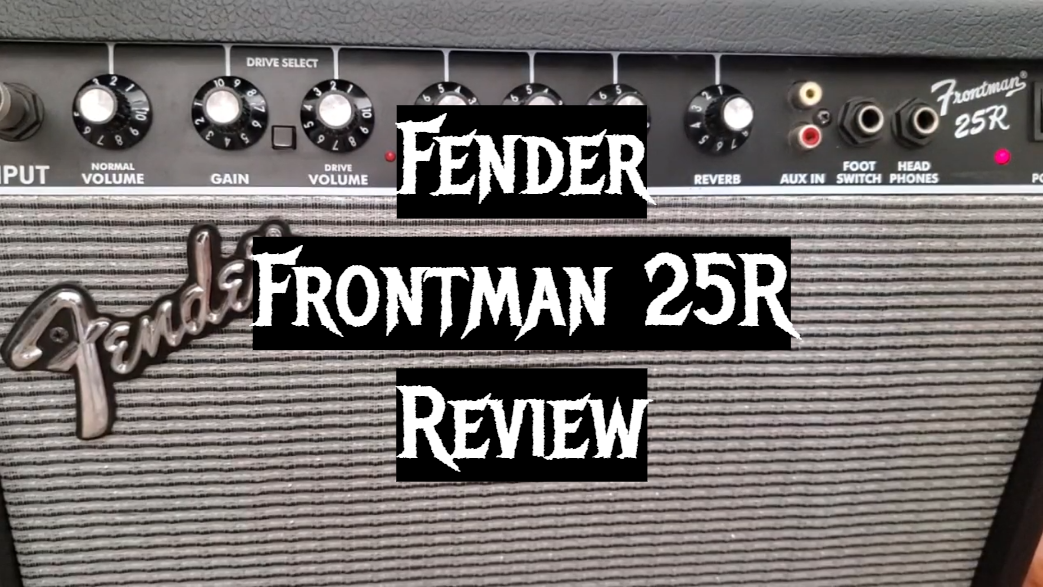
Leave a Reply